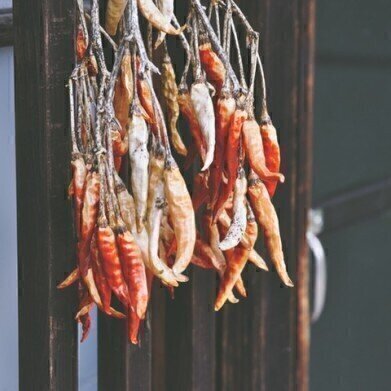HPLC, UHPLC
Can Chromatography Help Chili Peppers Overcome Salmonella?
Jan 16 2017
Salmonella is a curse for food loving peoples everywhere. It is one of the leading causes of foodborne illnesses causing serious illness and death. And while we are all aware that good food hygiene is important when handling fresh meat, fish and vegetables — how many of us give a thought to the dried spices and peppers that we liberally sprinkle in our recipes and on our food.
A recent paper has investigated the salmonella content of chili peppers, and used recent developments in chromatography to check the correlation between one of the main antimicrobial compounds in chili’s and the levels of salmonella seen in pepper samples.
Chili peppers — a wonder food?
Chili peppers are used in foods the world over — their ability to add spice and heat to recipes is well known, but their other properties are special too. Having been used in South American cultures since prehistoric times, it was during the thirteenth century and later that the use of peppers, and other spices, spread around the globe.
The chili pepper is member of the Solanaceae family and is closely related to the potato and tomato. The smell and taste of chilies are due to compounds known as capsaicinoids. It is the capsaicinoids that are measured when a chili is assigned a Scoville score — a measure of its hotness. But besides being pungent and hot — chilies also have antimicrobial properties.
Indeed, the Mayan people used chilies for all sort of medicinal uses including respiratory problems and infections, so it is perhaps not surprising that they have antimicrobial properties. But the modern science of knowing how and why chilies have biological properties that are useful to humans is not fully understood, in fact, it is fair to say that the research is in its infancy. But a paper recently published in the Journal of Food Biochemistry illustrates how researchers are looking at the humble pepper as a new wonder food.
New HILIC and cinnamic acid determination
The team, based in the USA, developed a new chromatography method based on hydrophilic interaction chromatography – mass spectrometry (HILIC-MS) to measure the cinnamic acids in dried chili peppers. The use of HILIC is discussed in the article, Electrostatic Effects in Hydrophilic Interaction Chromatography (HILIC): A Brief Review.
After measuring the cinnamic acid content of the peppers they evaluated the samples for Salmonella growth inhibition. Cinnamic acid is one of the compounds that have antimicrobial properties and were thought to be a compound that could be used to inhibit Salmonella growth. The team didn’t find any correlation between the cinnamic acid levels and Salmonella growth inhibition. So, the search for the inhibitory compounds goes on.
Meanwhile, take care how you dry and preserve your chilies. The recommendation is a low pH, good hygiene and sterilised containers.
Chili beef tacos anyone?
Digital Edition
Chromatography Today - Buyers' Guide 2022
October 2023
In This Edition Modern & Practical Applications - Accelerating ADC Development with Mass Spectrometry - Implementing High-Resolution Ion Mobility into Peptide Mapping Workflows Chromatogr...
View all digital editions
Events
Jan 20 2025 Amsterdam, Netherlands
Feb 03 2025 Dubai, UAE
Feb 05 2025 Guangzhou, China
Mar 01 2025 Boston, MA, USA
Mar 04 2025 Berlin, Germany



.jpg)










